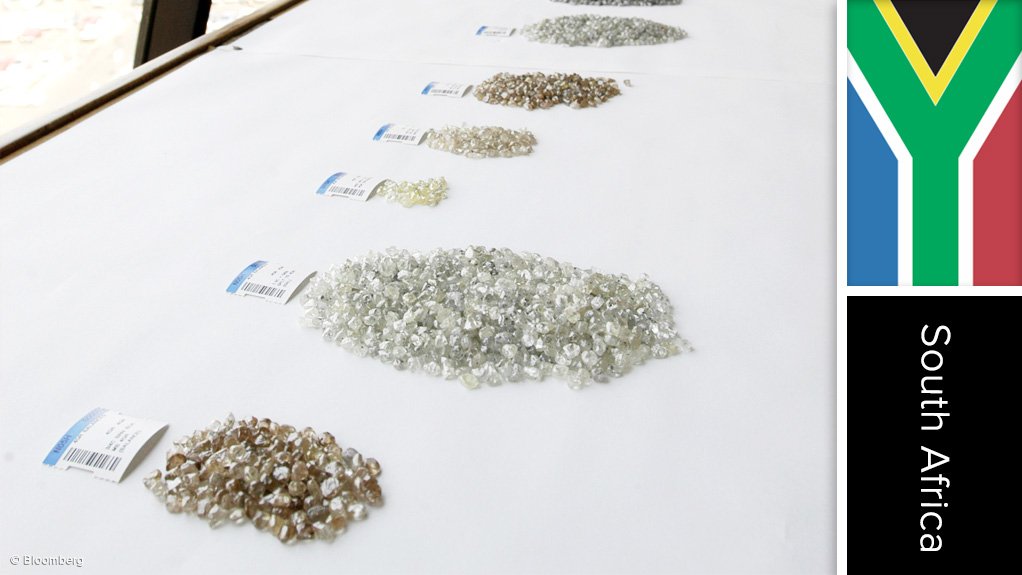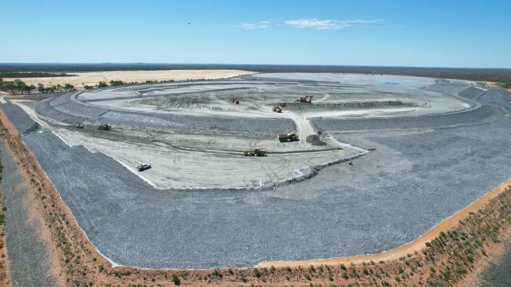Venetia underground project, South Africa
Name and Location
Venetia underground project, Limpopo, South Africa.
Client
De Beers Consolidated Mines South Africa (DBCM).
Project Description
The Venetia mine, which officially opened on August 14, 1992, is currently the largest producer of diamonds in South Africa and accounts for about 40% of the country’s total yearly diamond production.
The mine is currently an openpit operation; however, work started in late 2013 to build a new underground mining operation beneath the current operating openpit.
The new underground mine will extend the life of Venetia to beyond 2040 and replace the openpit production from 2021 as South Africa’s largest diamond mine. During the construction period between now and 2021, employment will peak at about 4 000. After 2021, the underground operation will support 6 625 jobs of which 1 482 will be in the mine and 5 143 elsewhere supporting mining activity.
Net Present Value/Internal Rate of Return
Not stated.
Value
De Beers expects to invest about R20-billion in the Venetia underground mine from now to 2021, when the conversion from openpit to underground is expected to begin.
Duration
Underground operations will begin production in 2021.
Latest Developments
Construction of the Venetia underground mine is 18% completed, with the company having spent more than $250-million on the project to date, DBCM CEO Phillip Barton has told Mining Weekly.
Barton says that a significant amount of the current Venetia mine capital spend has been dedicated to site establishment and mining services infrastructure. This includes the construction of terraces, bulk services (water and power), shaft collars, a decline portal and headgears for the underground mine.
State-owned power utility Eskom will add another high-voltage power line for the underground operations to bolster the existing facilities.
Construction of the 6 km decline, which will reach a final depth of 900 m, started in March 2014, and is forecast for completion in 2020. The decline has currently completed 780 m of linear development.
Further, the production and services shafts are planned to be sunk to a final depth of 1 040 m.
DBCM has completed the presink to 60 m in the services and production shafts, lowered the sinking stages into the shafts and started with headgear erection in preparation for main sinking activities this year.
Construction on the production and services shafts started in the second half of 2013, with completion of the shafts forecast for 2020.
A 750 t crane is being used to install the headgears for the two shafts into position; completion of the production shaft headgear is imminent and the headgear equipping has starteded. Additionally, the sinking winders have been installed and are being commissioned.
DBCM’s next focus is completing of the services shaft headgear, with the stage installed in the shaft and subbank completed. The hive of activity on surface will slowly diminish towards year-end, “allowing us to focus on the safe and productive development of the shafts and the decline. The shafts’ ‘slow sink’ will enable the crews to acclimatise and safely control equipment from the stage, with no work going on beneath the stage, which used to be the norm in vertical shaft sinking. Taking time to be safe is no problem in our book,” Barton has said.
The Canadian shaft-sinking technology applied at Venetia ensures improved safety. The method significantly decreases the number of personnel from the shaft bottom during cleaning operations. It does not allow for concurrent activities (sinking and linking), thereby eliminating personnel working above each other, significantly reducing exposure to falling objects, he emphasises.
De Beers has selected construction, engineering and mining major Murray & Roberts (M&R) subsidiary M&R Cementation as the preferred partner for the shaft development. The contract work includes the sinking, equipping and commissioning of a decline tunnel and ramp, and two vertical shafts; horizontal tunnel development to provide access to and establish loading levels; and associated ventilation, ground- and water-handling infrastructure.
DBCM’s focus for 2016 and 2017 will be the three production ends, with the aim to complete the decline tunnel and the sinking of both shafts. Barton explains that each 3.5-m-deep blast extends the decline, while the blast depths of the two vertical shafts vary as the contractors progress from the presink to the slow sink and standard sink routes.
The existing Venetia mine processing plant will treat the underground ore when the production shifts underground. While the plant was originally built to process 4.8-million tonnes of ore a year, DBCM has debottlenecked and improved the process to increase throughput to six-million tonnes a year, Barton says, adding that if DBCM mines the K1 and K2 pipes concurrently, it can process the six-million tonnes a year.
The option to potentially mine eight-million tonnes a year remains open, but will require an additional stream to the existing plant.
Studies are also being conducted to consider automating sections of the Venetia unerground project such as the implementation of driverless, automated truck loops managed from remote surface-based drivers – similar to those employed at the ex-De Beers managed Finsch diamond mine, in the Northern Cape.
Barton has stressed that DBCM will remain informed and open-minded to new mining and automation technologies, he has also reiterated the preference for deploying proven, commercially viable technologies.
Key Contracts and Suppliers
M&R Cementation (development of underground mine), Basil Read Civils, Conco, Sandvik and Barloworld.
On Budget and on Time?
The project is on schedule to produce its first diamonds in 2021.
Contact Details for Project Information
DBCM, email info@debeersgroup.com.
M&R Cementation group communications executive, Ed Jardim, cell +27 83 357 6282 or email eduard.jardim@murrob.com; or tel +27 11 201 5000, fax +27 11 201 5500 or email info.cementation@murrob.com.
Basil Read Civils, tel +27 11 418 6300 or fax +27 11 418 6333.
Conco, tel +27 11 805 4281, fax +27 11 805 1132 or email conco@conco.co.za.
Sandvik, tel +27 11 929 5300.
Barloworld, tel +27 11 445 1000 or fax +27 11 444 3643.
Comments
Press Office
Announcements
What's On
Subscribe to improve your user experience...
Option 1 (equivalent of R125 a month):
Receive a weekly copy of Creamer Media's Engineering News & Mining Weekly magazine
(print copy for those in South Africa and e-magazine for those outside of South Africa)
Receive daily email newsletters
Access to full search results
Access archive of magazine back copies
Access to Projects in Progress
Access to ONE Research Report of your choice in PDF format
Option 2 (equivalent of R375 a month):
All benefits from Option 1
PLUS
Access to Creamer Media's Research Channel Africa for ALL Research Reports, in PDF format, on various industrial and mining sectors
including Electricity; Water; Energy Transition; Hydrogen; Roads, Rail and Ports; Coal; Gold; Platinum; Battery Metals; etc.
Already a subscriber?
Forgotten your password?
Receive weekly copy of Creamer Media's Engineering News & Mining Weekly magazine (print copy for those in South Africa and e-magazine for those outside of South Africa)
➕
Recieve daily email newsletters
➕
Access to full search results
➕
Access archive of magazine back copies
➕
Access to Projects in Progress
➕
Access to ONE Research Report of your choice in PDF format
RESEARCH CHANNEL AFRICA
R4500 (equivalent of R375 a month)
SUBSCRIBEAll benefits from Option 1
➕
Access to Creamer Media's Research Channel Africa for ALL Research Reports on various industrial and mining sectors, in PDF format, including on:
Electricity
➕
Water
➕
Energy Transition
➕
Hydrogen
➕
Roads, Rail and Ports
➕
Coal
➕
Gold
➕
Platinum
➕
Battery Metals
➕
etc.
Receive all benefits from Option 1 or Option 2 delivered to numerous people at your company
➕
Multiple User names and Passwords for simultaneous log-ins
➕
Intranet integration access to all in your organisation





















